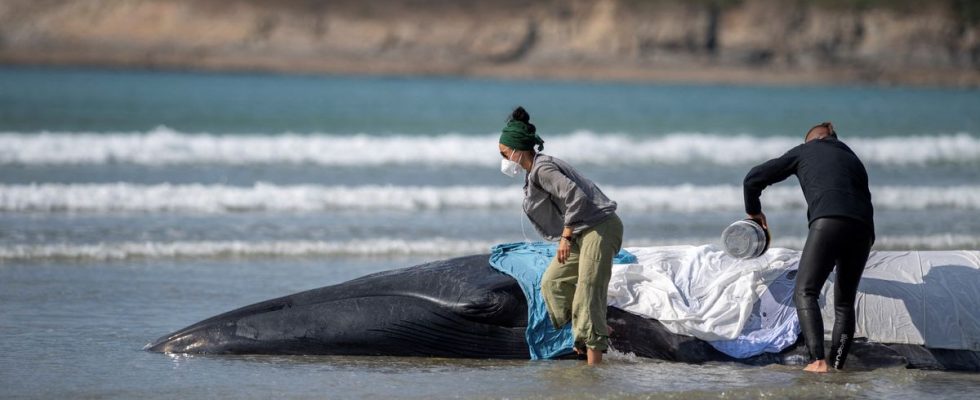They wanted to act but they would have done better not to intervene. On May 21, divers intervened to rescue a whale in difficulty near the tip of Conguel on the Quiberon peninsula (Morbihan). Visibly in bad shape, the animal was close to being stranded when it was seen by walkers and boaters. While some of them had the good instinct to call the municipal police, others were unable to wait for help to arrive and ignored the police officer’s warnings to help the young whale, prompting the anger of the rescuers who moved for nothing. How to act properly in case of discovery of an animal stranded or in difficulty? Explanations with Pelagis teams.
Based in La Rochelle, the Observatory for the conservation of marine megafauna is the priority contact and has 480 people authorized to intervene. If you see an animal in difficulty, it is to him first that we must turn by dialing 05 46 44 99 10, which operates seven days a week. “People want to do well, they want to help the animal but they must understand that they are exposing the animal but also themselves to risks. The first rule is not to approach them. Whether they are dead or alive, do not touch them”, explains Willy Dabin, member of the Pelagis network. On May 21, the only municipal police officer could not keep the witnesses from intervening in particular “under the pressure of social networks” specifies the observatory. Divers therefore manipulated the young whale to take it out to sea. It is not known if the animal survived. “We must not confuse speed with haste. We had engaged resources which were in the process of going there. All for nothing. »
The first of the risks is primarily for humans. In 95% of stranding cases, the animal is dead. And even if he’s still alive, there’s a good chance he’s sick. “These mammals can transmit viruses and diseases. It is therefore imperative to have protective equipment for any risk of transmission. There is good behavior to adopt so as not to be exposed to risks”, continues Willy Dabin. Too brutal an approach would also be likely to further weaken an animal already in bad shape. “The first risk is stress. Most animals succumb to it. » It is not advisable to approach cetaceans and make too much noise around them, in particular by grouping together or speaking too loudly.
A very low survival rate
The authorities are also warning about the wild appearance of these animals, the handling of which can be dangerous. The example of seals is the most convincing. With its harmless plush image, the animal sometimes makes you forget that it has a powerful jaw that can seriously injure people. It should be noted in passing that, even when the right gestures are respected, the survival rate of rescued animals remains very low.
From December 2021 to April 2022, 586 small cetaceans had been found stranded along the French Atlantic coast, including 524 on the coast of the Bay of Biscay. Most of these animals were common dolphins. A phenomenon that has been on the increase in recent years. Just over 70% of the specimens examined showed signs of death in fishing gear, angering animal protection associations. Some had asked the government to suspend fishing campaigns for several weeks to spare the lives of cetaceans.

